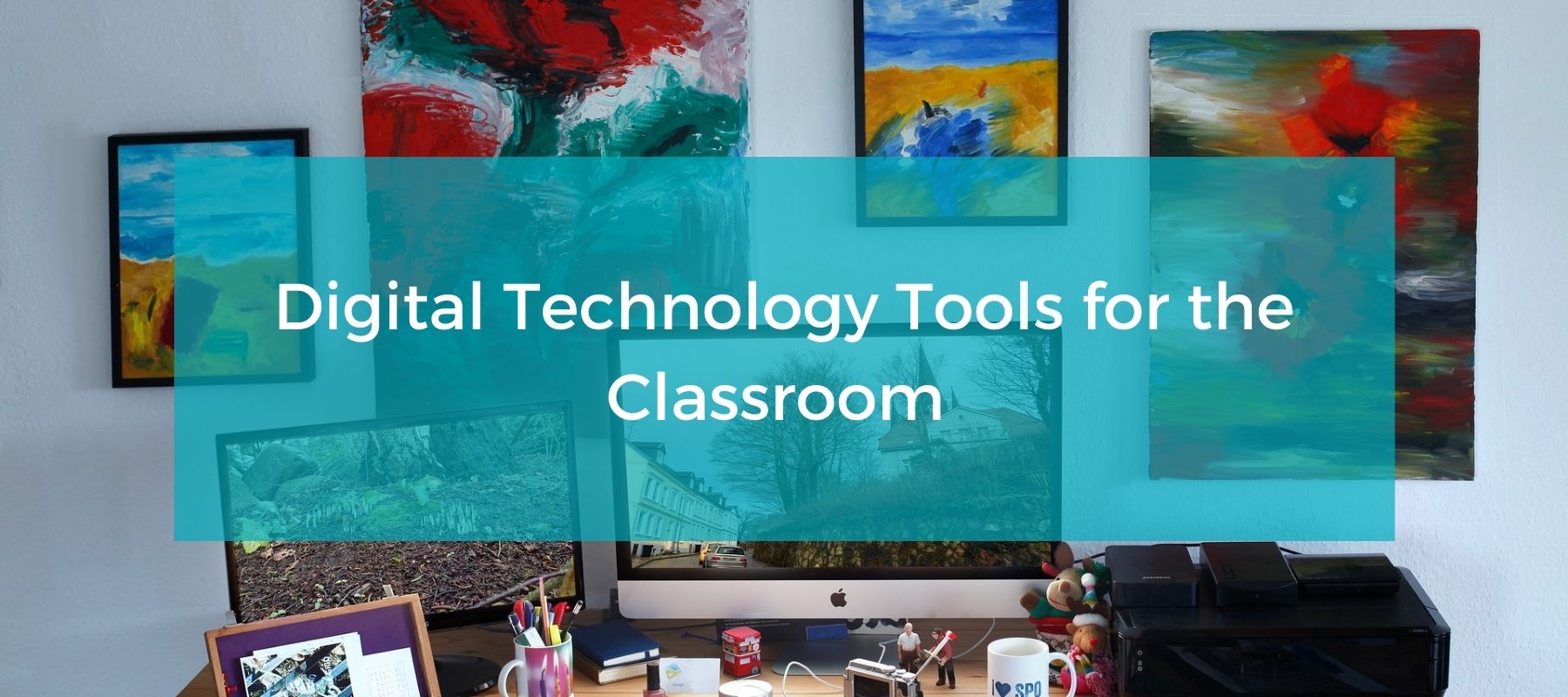
Digital Technology Tools for the Classroom
Over 95% of teachers use digital signage software tools to enhance the classroom experience. The ongoing debate about their benefits for students and teachers continues, but one thing is clear: these tools can transform education. This article explores the top digital classroom tools and how they support teaching and learning in today’s classrooms.
What are Digital Technology Tools for the Classroom?
Digital technology tools for the classroom include apps, software, and platforms that facilitate communication, collaboration, engagement, and curriculum development. These tools allow teachers and students to interact through social media, online games, multimedia, and mobile apps. Programs like Office 365 and Google Suite enable collaboration and resource sharing, supporting the creation an immersive learning environment. Tools such as Chromebooks, tablets, and Airtame devices are commonly used in digital classrooms to bring innovation and accessibility to the educational process.

Key Examples of Digital Technology Tools That Support Learning
Several companies have developed specialized learning software and apps to support students in the classroom. These digital learning platforms offer interactive, personalized lessons that engage students and promote active participation. Here are some essential tools for the modern classroom:
-
Google Classroom: By integrating Google Docs, Sheets, and Calendar, Google Classroom allows teachers to manage assignments, collaboration, communication, and grading in one convenient platform. Teachers can also use Google Meets for virtual lessons and discussions.
-
Google Apps for Education and Microsoft Office 365: These cloud-based tools provide students and teachers with a feature-rich, collaborative digital environment. Google Apps for Education includes Gmail, Drive, Google Docs, Google Sheets, and Google Classroom. Microsoft Office 365 offers Outlook, OneDrive, PowerPoint, OneNote, Teams, and other productivity apps that work seamlessly on Windows, Apple, Android, and Chromebook devices.
-
Flipgrid: A free video discussion platform built by Microsoft, Flipgrid enables teachers to post prompts and allows students to respond via short video clips. This fosters a more interactive and social learning environment.
-
Seesaw: This app is designed to engage students and maintain their connection to the classroom. It encourages creativity and documentation of learning experiences, helping students learn to use technology while staying engaged.
Games and Interactive Learning Tools
Several interactive platforms help make learning fun and engaging:
-
Gimkit: A group quiz-based tool where questions repeat randomly, promoting active learning through repetition.
-
Kahoot: A competitive quiz tool that turns learning into a fun, game-based student experience.
-
Quizlet: A flashcard-based learning tool incorporating games to help students study and memorize concepts.
-
Minecraft for Education: A game-based learning platform where students can engage in problem-solving, creativity, and collaboration using blocks or text-based coding with Python.
Hardware for the Classroom: Bringing Technology to Life
Educational devices come in many forms, each tailored for different classroom needs:
-
Chromebooks and iPads: Portable devices that facilitate both in-class and online activities.
-
SMART Boards and Projectors: Interactive displays that promote engagement and collaboration in the classroom, offering wireless screen sharing and multimedia features.
-
Airtame: A wireless screen-sharing device that enables seamless integration with manufacturing dashboard, Rise Vision templates, messaging, and emergency alerts, making classroom displays more interactive.

How Digital Tools Support Learning in 2025
Integrating digital tools in the classroom offers numerous advantages, transforming how students learn, and teachers instruct. By connecting teachers to students and providing access to vast resources, these tools help personalize learning and make classroom routines more efficient.
Recent studies show that 86% of teachers believe educational technology is essential for the classroom, with 96% stating it increases student engagement. Additionally, 63% of educators believe digital tools accelerate learning. By providing real-time feedback and collaborative learning opportunities, digital technology empowers students to take control of their education and helps teachers deliver more effective lessons.
Digital tools also foster essential skill development, including communication, creativity, critical thinking, problem-solving, and digital literacy. As education becomes more digital, students can learn at their own pace, increasing their engagement and creating a more inclusive learning environment.
Why Digital Tools are Crucial for the Classroom of Tomorrow
With the rapid growth of technology, digital tools are no longer just optional but essential components of modern education. The classroom of tomorrow will rely heavily on technology to enhance teaching and learning experiences. As tools like Google Classroom, Microsoft Office 365, and interactive apps continue to evolve, they will provide even more excellent personalized learning and engagement opportunities.
The Future of Classroom Technology with Rise Vision
Digital classroom tools have proven effective in creating more engaging, personalized, and efficient learning experiences. As we approach 2025, the integration of these tools will only continue to grow. Solutions like Rise Vision’s free cloud digital signage enhance classroom communication, streamline announcements, and improve lesson engagement through dynamic displays. To learn more about how Rise Vision can help meet your digital classroom needs, attend our weekly webinar and explore how we can transform your classroom.
More From Our Blog
-

Screen Sharing for Workplace Collaboration | Rise Vision
Screen-sharing technology has transformed how teams communicate and work together in real-time, regardless of their location. It can make presentations more engaging, support remote work, and speed[…]
Read More -

How to Use PowerPoint for Digital Signage
To create stunning, attention-grabbing, and effective digital signage content, you need the help of content creation and presentation tools. One of the most popular is Microsoft PowerPoint, owing to[…]
Read More -

120 Digital Signage Content Ideas
So…. you decided you would invest in some digital signage software and you need some ideas for ways you can make it stand out. This article is your go-to source for the best digital signage content[…]
Read More
Keep Your Displays Interesting – Pick New Templates Every Week!
Every week, we send template recommendations that will make you look great and improve your audience experience. And the best part, they save up to 16 hours of content creation time every week!
12,300+ Organizations Trust Rise Vision, You Can Too
Schedule a Free Demo
You deserve the #1 all-in-one platform for digital signage, screen sharing, and emergency alerts.



































